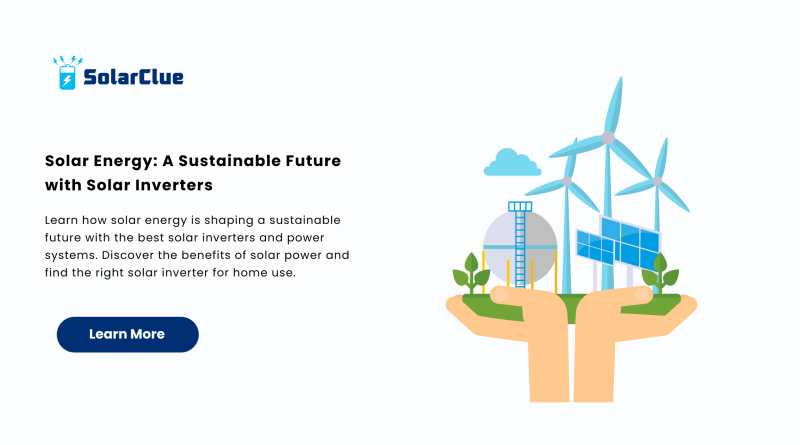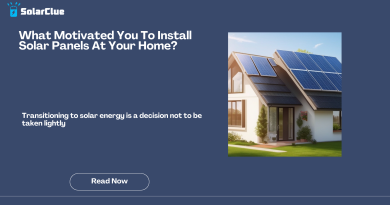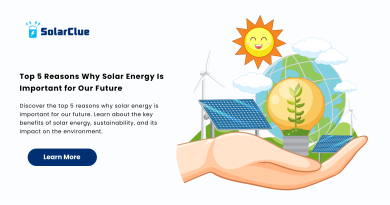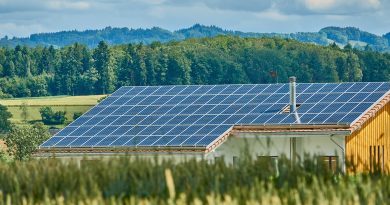Solar Energy: A Sustainable Future with Solar Inverters
The future of energy depends on sustainability, and solar energy plays a vital role in this transformation. As the world shifts to cleaner alternatives to fossil fuels, solar power has gained significant momentum. By harnessing the sun’s abundant energy, we can reduce our carbon footprint and create a more sustainable future. In this blog, we explore the importance of solar energy, the role of solar inverters, and how solar power systems can be integrated into homes for long-term benefits.
Table of Contents
What is Solar Energy?
Solar energy refers to the energy captured from the sun, converted into electricity or heat. This energy can power a wide range of applications, from homes to large-scale industries. Solar power systems consist of solar panels that capture sunlight and convert it into electricity through the photovoltaic effect. A reliable solar inverter for home use ensures the smooth conversion of DC power into AC power, making it suitable for household use.
The Role of Solar Inverters in Solar Power Systems
A solar inverter is a key component in a solar power system. It converts the direct current (DC) electricity produced by solar panels into alternating current (AC), which powers household appliances. Without a solar inverter, the electricity produced by the solar panels wouldn’t be usable.
When selecting a solar inverter for home, consider the system’s capacity, efficiency, and compatibility with your solar panels. Different types of solar inverters are available, such as string inverters, microinverters, and hybrid inverters. Choosing the right one will enhance the performance and lifespan of your solar power system.
Types of Solar Inverters
-
String Inverters: These are the most common and cost-effective inverters. They connect a series of solar panels to a single inverter. While efficient, their performance can drop if one or more panels are shaded or dirty.
-
Microinverters: Installed on each panel, these inverters allow each panel to function independently. They offer higher efficiency, especially in shaded areas, as each panel operates at its optimal capacity.
-
Hybrid Inverters: These inverters work with both solar panels and battery storage systems. If you aim to maximize energy independence, hybrid inverters store excess energy for use on cloudy days or at night.
Benefits of Solar Power Systems
The adoption of solar power continues to grow worldwide, driven by its numerous advantages. From financial savings to environmental sustainability, the reasons to switch to solar are compelling. Let’s explore the key benefits of solar power systems:
1. Environmental Benefits
By tapping into the sun’s energy, solar power systems help reduce reliance on fossil fuels, thereby decreasing greenhouse gas emissions. Solar energy is a clean, renewable resource that doesn’t contribute to air pollution or climate change.
2. Cost Savings
Switching to solar energy can lead to significant long-term savings. Although the initial cost of installing a solar power system may be high, the return on investment is considerable. With energy bills on the rise, generating your own electricity with solar power will lower your monthly utility expenses.
3. Energy Independence
A solar power system offers greater energy independence. By installing solar panels, you reduce your reliance on the utility grid. This is particularly beneficial in regions with high electricity costs or frequent power outages.
4. Increase in Property Value
Homes with solar power systems are often more valuable. These homes tend to sell faster and for a higher price due to reduced energy costs and increased energy efficiency. Studies have shown that buyers are more attracted to homes with solar panels.
5. Low Maintenance Costs
Once installed, solar power systems require minimal maintenance. Solar panels are designed to last for decades, and most come with long warranties. Regular cleaning to remove dirt and debris is the main maintenance task.
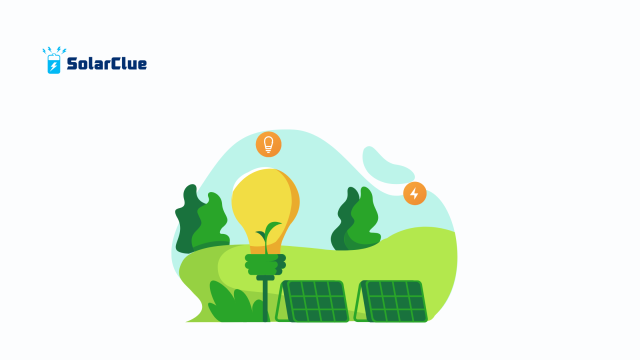
How Solar Power Systems Work
A typical solar power system consists of several key components: solar panels, a solar inverter, and optional battery storage. The solar panels collect sunlight and convert it into electricity, which is sent to the solar inverter for conversion into AC power. If a battery storage system is used, excess electricity is stored for later use.
Step-by-Step Process of Solar Energy Generation
-
Solar panels capture sunlight.
-
Photovoltaic cells convert sunlight into DC electricity.
-
The solar inverter converts DC into AC electricity.
-
The electricity powers appliances in your home.
-
Excess energy is either stored in a battery or fed back to the grid.
Choosing the Right Solar Inverter for Your Home
When selecting a solar inverter for home, consider factors like your home’s size, energy usage, and the capacity of your solar panel system. Some inverters come with advanced features like real-time monitoring, which allows homeowners to track system performance through mobile apps.
Factors to Consider:
-
System Size: Ensure that the inverter is compatible with your solar panel system’s capacity.
-
Efficiency: Choose a high-efficiency inverter that maximizes the energy output from your solar panels.
-
Warranty: A longer warranty period often indicates a higher-quality inverter.
-
Brand Reputation: Reputable brands like SMA, Fronius, and SolarEdge are known for their reliable solar inverters.
FAQs About Solar Power and Inverters
1. What is a solar inverter?
A solar inverter converts the DC electricity generated by solar panels into AC electricity, which is used by household appliances.
2. Can I install solar panels without an inverter?
No, an inverter is required to convert the electricity generated by the solar panels into usable AC power for most homes.
3. How long do solar inverters last?
Typically, solar inverters last between 10 to 15 years, depending on the brand and model. Many come with warranties covering 5 to 10 years.
4. What is the best solar inverter for home use?
The best solar inverter for home use depends on factors such as your system size, energy requirements, and budget. Popular options include string inverters, microinverters, and hybrid inverters.
5. How much does a solar inverter cost?
The price of a solar inverter can range from ₹20,000 to ₹80,000, depending on its type and capacity. However, the investment will pay off over time with reduced electricity bills.
In conclusion, solar energy presents a sustainable, cost-effective solution for our energy needs. By investing in a reliable solar power system and choosing the right solar inverter for home, you can reduce your carbon footprint and enjoy long-term savings. Take the step toward a greener future today!
For more information on solar power systems and the best solar inverters, visit us at solarclue.com or check out our blog at blog.solarclue.com.

